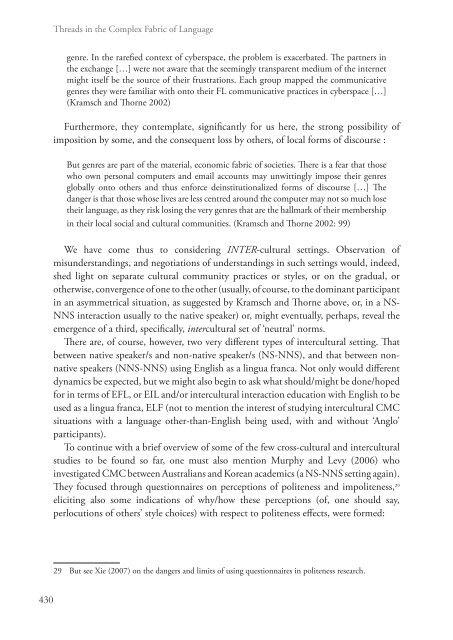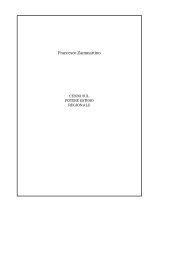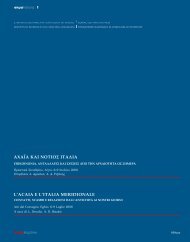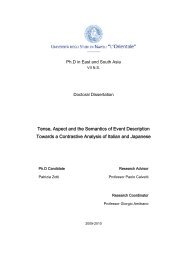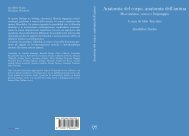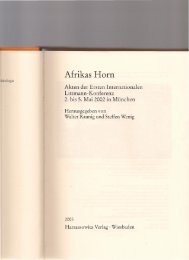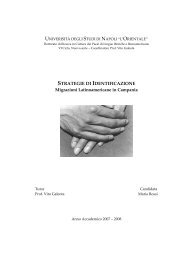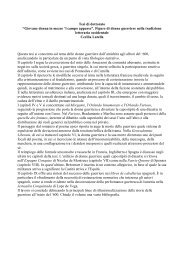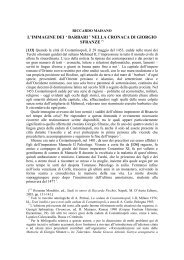Netiquette rules, OK! - OPAR L'Orientale Open Archive
Netiquette rules, OK! - OPAR L'Orientale Open Archive
Netiquette rules, OK! - OPAR L'Orientale Open Archive
- No tags were found...
You also want an ePaper? Increase the reach of your titles
YUMPU automatically turns print PDFs into web optimized ePapers that Google loves.
Threads in the Complex Fabric of Languagegenre. In the rarefied context of cyberspace, the problem is exacerbated. The partners inthe exchange […] were not aware that the seemingly transparent medium of the internetmight itself be the source of their frustrations. Each group mapped the communicativegenres they were familiar with onto their FL communicative practices in cyberspace […](Kramsch and Thorne 2002)Furthermore, they contemplate, significantly for us here, the strong possibility ofimposition by some, and the consequent loss by others, of local forms of discourse :But genres are part of the material, economic fabric of societies. There is a fear that thosewho own personal computers and email accounts may unwittingly impose their genresglobally onto others and thus enforce deinstitutionalized forms of discourse […] Thedanger is that those whose lives are less centred around the computer may not so much losetheir language, as they risk losing the very genres that are the hallmark of their membershipin their local social and cultural communities. (Kramsch and Thorne 2002: 99)We have come thus to considering INTER-cultural settings. Observation ofmisunderstandings, and negotiations of understandings in such settings would, indeed,shed light on separate cultural community practices or styles, or on the gradual, orotherwise, convergence of one to the other (usually, of course, to the dominant participantin an asymmetrical situation, as suggested by Kramsch and Thorne above, or, in a NS-NNS interaction usually to the native speaker) or, might eventually, perhaps, reveal theemergence of a third, specifically, intercultural set of ‘neutral’ norms.There are, of course, however, two very different types of intercultural setting. Thatbetween native speaker/s and non-native speaker/s (NS-NNS), and that between nonnativespeakers (NNS-NNS) using English as a lingua franca. Not only would differentdynamics be expected, but we might also begin to ask what should/might be done/hopedfor in terms of EFL, or EIL and/or intercultural interaction education with English to beused as a lingua franca, ELF (not to mention the interest of studying intercultural CMCsituations with a language other-than-English being used, with and without ‘Anglo’participants).To continue with a brief overview of some of the few cross-cultural and interculturalstudies to be found so far, one must also mention Murphy and Levy (2006) whoinvestigated CMC between Australians and Korean academics (a NS-NNS setting again).They focused through questionnaires on perceptions of politeness and impoliteness, 29eliciting also some indications of why/how these perceptions (of, one should say,perlocutions of others’ style choices) with respect to politeness effects, were formed:29 But see Xie (2007) on the dangers and limits of using questionnaires in politeness research.430


